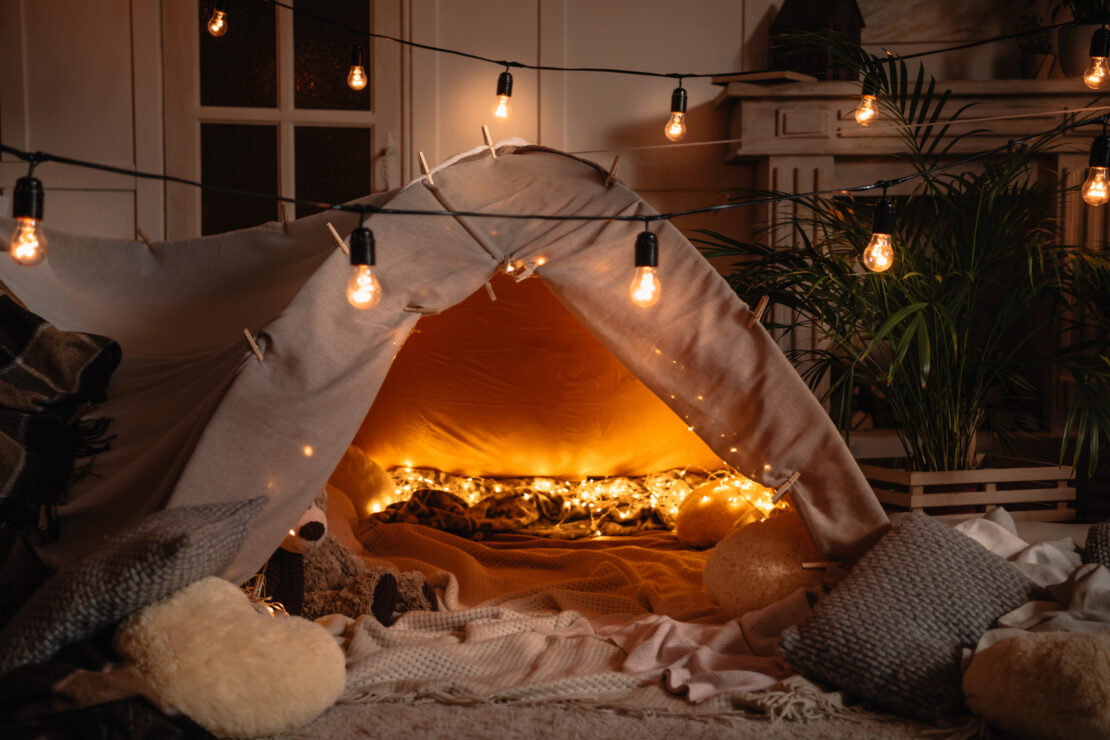
What is a Safe Space?
A safe space is a place for children to go to navigate their big feelings. Everyone experiences feelings that are powerful and overwhelming; however, as a child these feelings can seem impossible to face. Children lack the skillset needed to self-regulate these big emotions because they are still developing and learning day by day. Therefore, a safe space creates a designated area away from intense outside stimulations to give children a specific place for learning how to deal with these big feelings.
The Physical Space
A safe space is best utilized when it provides the child with protection and privacy. A space like this allows the child to take time away from whatever intense situation caused them to experience those big feelings. Safe spaces are best when created in a corner or a nook as this allows the child to have the privacy they need to best work through their emotions. If the area you are hoping to create a safe space in doesn’t have a good corner or nook, one can be created using bookshelves, screens, or tents. When creating a safe space for children, make sure that the area they will be in is still visible to trusted adults to mitigate any risks in emergency situations.
More goes into creating a safe space than just the area it is in; the space also needs to have low sensory input. Big feelings are overwhelming because they are very stimulating; however, there are certain things that can be done to limit the amount of outside stimulation coming into a space. This goal is best achieved through adding soft colors, dim lighting, and noise-cancelling headphones into the space.
A safe space should offer comfort to the child, in whatever way they may need, while they are processing their emotions. Safe spaces can be used to process all kinds of emotions, so the space should incorporate items for children to use in all different types of situations. Soft and cuddly items like cushions, blankets, and stuffed animals can be a good option for children experiencing emotions related to sadness and pain. Weighted items like blankets, lap pads, or neck wraps can be a good option for children experiencing stress, fear, or anxiety. Lastly, sensory objects like slime, squeeze toys, or stress balls can be a good option for children experiencing feelings of anger and frustration. It is important to create a space that can adapt to all types of emotions and feelings so it can be used by any child who may need it.
Using a Safe Space
The first step is to introduce the kid(s) to the space. Show them every part of the space as well as how it can be used. Explain what tools can be used for soothing or to let out anger. This is also a great time to talk about how emotions can feel to each person and how they can present differently in each person. Feelings, especially big ones, are hard for kids to navigate so show them that needing time to process is normal.
After introducing them to the space, it will take some time before they know how to use it. Allow the child to direct the situation and let them tell you what they feel they need. You can then work with their needs, whether that be leaving them alone or talking through the situation with them. If the child decides they want alone time to process their emotions, it is important to always follow up with them after. By following up, you can assure them that their feelings are valid and help them make a plan for the next time they experience those feelings.
Younger kids may struggle to recognize their emotions which, in turn, may make it difficult to explain what they feel they need. Utilizing examples, like book or movie characters, is a great way to help a kid recognize emotions. By creating that common language, it will allow the child to more effectively communicate what it is that they need. Putting up pictures of these characters or placing emotion cards in the space can help stimulate that prior knowledge during a tough conversation.
When using a safe space, you aren’t always going to have step-by-step instructions as every situation will be different. The most important part is using your knowledge and experience to guide kids towards an effective and safe way to process their difficult emotions.
References
Education Gateshead. (2021). Education Gateshead. How to Create and Use a “Safe Space” in Schools. https://educationgateshead.org/wp-content/uploads/2021/09/3535f-JH-How-to-create-and-use-a-Safe-Space-in-schools.pdf
Mommy Evolution. (2023). Mommy Evolution. Create emotional safe space to help Child Express Big Feelings. https://mommyevolution.com/emotional-safe-space/
Starr, J. (2021). Teaching with Jillian Starr. How to create a safe space for small children with big feelings. https://jillianstarrteaching.com/safe-space-classroom/
